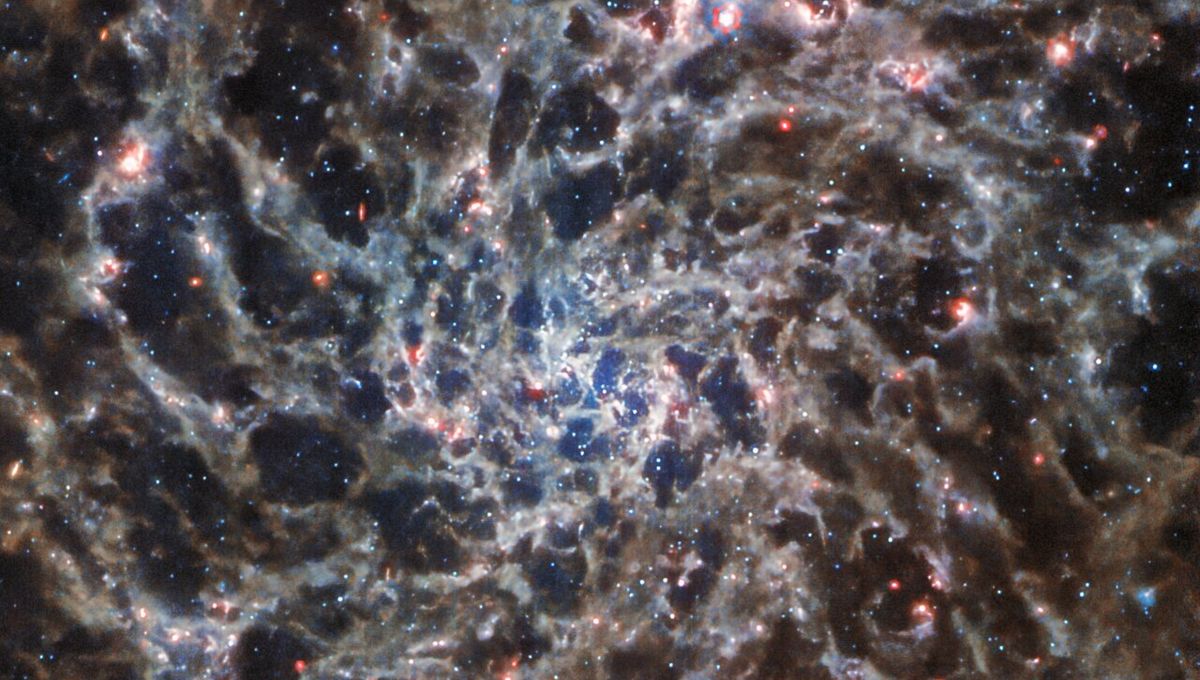
The two big guns of the space telescope world – Hubble and JWST – have both captured a new image of the spiral galaxy IC 5332. While Hubble’s image shows the galaxy’s beautifully glowing spiraling arms, JWST is able to reveal its deeper underlying structure of glowing gas, like staring into another dimension.
IC 5332 is a spiral galaxy that measures around 66,000 light-years in diameter and can be found a mere 29 million light-years away from us. Viewed from Earth, the galaxy appears beautifully symmetrical, with arms of galaxies gently curving round into a circular shape.
JWST recently released a shot of IC 5332 that was captured with the help of its onboard Mid-InfraRed Instrument (MIRI). You can swipe between the two images in the tool below, with Hubble’s image on the left and JWST’s on the right.
As its name suggests, the MIRI is able to pick up on the mid-infrared region of the electromagnetic spectrum, which is extremely tough to observe from Earth due to our own heat emissions and protective atmosphere.
By looking at the mid-infrared, it allows the tool to effectively peer through its dust clouds. For comparison, Hubble’s image picks up ultraviolet and visible light, which become highly scattered by interstellar dust compared to infrared light.
Therefore, the dusty regions in the Hubble image are the darker regions found between the galaxy arms. In JWST’s image, we are able to peer through the dusty regions and perceive its deeply intricate structure.
Each of the images also shows different stars from one another because certain stars shine brighter in the ultraviolet, visible, and infrared regimes.
Remarkably, MIRI operates at a temperature some 33°C (59.4°F) below the rest of the observatory at the frosty temperature of −266°C (−446.8°F) – that’s almost as cold as the lowest possible temperature under the laws of thermodynamics.
After years and years of delays, JWST was finally launched into space on Christmas Day 2021. Led under the command of NASA, the European Space Agency (ESA), and the Canadian Space Agency (CSA), it’s the most powerful and most expensive telescope ever built by humans.
Although it’s only been fully operational for a few months, it’s already beamed down some truly stunning (and scientifically useful) insights into our universe. Along with capturing nebula and exoplanets, it’s also managed to image some of our well-known planetary neighbors in the solar system, including Jupiter and Mars.
Keep up the good work, JWST.
Source Link: New JWST Image Captures Deep Hidden Structures Of A Spiral Galaxy